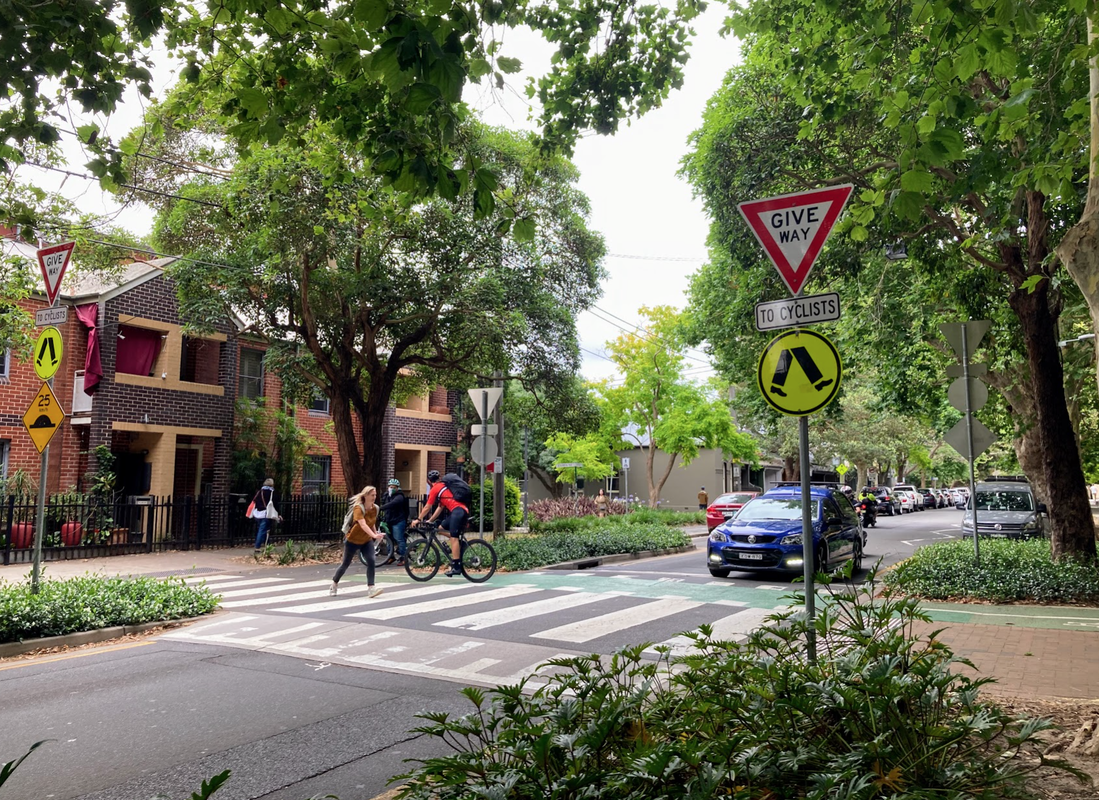Why it's worth doing
More people, including kids, the less mobile and the elderly, will walk on streets if they are accommodated by safer speeds, footpaths and convenient crossings. Just as car drivers cite convenience as their main reason for using a vehicle to complete a trip, walkers also look for convenience on their route – which is exactly what well-placed crossings offer.
Crossings also act as a traffic calming measure – particularly the raised versions, sometimes called “wombat crossings – helping to lower vehicle speeds and reducing the risk of injury. By connecting pleasant, safe streets in a neighbourhood, crossings break up the pedestrian ‘islands’ that restrict movement, recreation and local business. By giving people a sense of control, rather than having to push the ‘beg button’ and wait for traffic lights to turn in their favour, crossings empower the less mobile and make them feel more accepted in their own communities.
Crossings also act as a traffic calming measure – particularly the raised versions, sometimes called “wombat crossings – helping to lower vehicle speeds and reducing the risk of injury. By connecting pleasant, safe streets in a neighbourhood, crossings break up the pedestrian ‘islands’ that restrict movement, recreation and local business. By giving people a sense of control, rather than having to push the ‘beg button’ and wait for traffic lights to turn in their favour, crossings empower the less mobile and make them feel more accepted in their own communities.
What's getting in the way?
A lack of crossings is simply a reflection of priorities. State Governments provide the funding for street infrastructure but it usually comes down to local councils to make on-the-ground decisions about what to build, remove or improve on our local streets. If a council is under the impression we all want infrastructure for cars (more parking, wider roads, fewer obstructions to driving), that’s what we’ll get. It’s not as if anyone is lobbying hard from more car infrastructure, it’s just a reflection of how ‘car-brained’ we’ve allowed our cities and towns to become. Time for that to change.
How we make positive change
Local governments have the power to make decisions about where to put new pedestrian crossings and they will respond to community demand if it is well-organised and represents a cross-section of local residents. Whether as an individual or part of a group you can make note of the specific places you believe a crossing would be beneficial, then talk to neighbours and other residents to see if they share your views. Organising locally, gathering support and taking your evidenced-based requests to local council is a proven, effective way to advocate for more pedestrian crossings your neighbourhood streets.
The most effective groups to lead this change
Pedestrian crossings really do benefit everyone, but the groups who are well placed to make the case to local council includes Parent & Citizen associations, community groups and advocates for the elderly and the less-abled. It would be easy to see walking clubs and dog owners’ associations banding together to work to improve their daily circuit with a few well-placed crossings.
How you can get started
Better Streets toolkit to install a pedestrian crossing is here.
Transport for NSW Pedestrian crossing guidelines - link
Transport for NSW Pedestrian crossing guidelines - link

